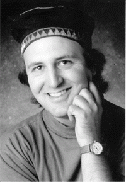Olson Continued
Olson is still at issue, as he has been, always, since the beginning — my reading of the early Maximus poems in 1975. Here and now, Cynthia has brought me vols. 6-8 of the Creeley Olson correspondence, and in the introduction to vol. 6 George Butterick draws attention to Olson's comment that "rhythm is only the expression of the presiding imagism behind it" — where I take rhythm to be that total articulation of the sound of the poem, but realized, not only in its totality, but in its marked particulars — at each moment. Imagism here invokes the entire process of knowing — how imagism is the ability of the poet to come to languages, to images, through everything she or he believes and is — also realized as a totality and in the details, rhythm here being a term in the middle, a detail of the "presiding imagism" but itself expressed in myriad sub-details: movements, lines, phrases, word groups, individual words, syllables, morphemes, and phonemes — and all of their currents and undercurrents.
I sensed something like this a couple of months ago, when I felt that several poets at a reading I heard evidenced a music in their work that was like a jangling of the leaves, yet without the music at the root, without a music that informed the whole, including those jangles. In Olson's terms, a rhythm that was not the expression of any "presiding imagism" behind it. A rhythm that was amorphous, dispersed without body. Effect without urgency — buzzing without soul, although that term invokes an entirely new problematic.
One might also look at the formulation in Olson's poems:
of rhythm is image
of image is knowing
of knowing there is
a construct
But here the terms form nearly a mirror, as rhythm comes out of the construct, but it also is a construct and informs the construct. Or, if construct is taken to be a definition of the state of material in the world, then it is realized through knowing to image to rhythm. Yet any way you look at it, it (perhaps that it that is energy in Olson's terms as stated in "Projective Verse") seems to flow back and forth in an enticing dynamic.

